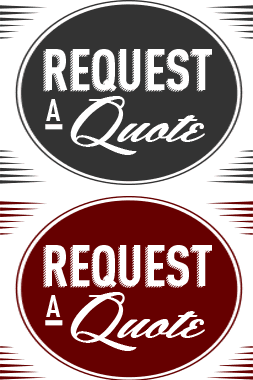
The most widely used types of stainless steel are graded as 304 and 316. The grading system used to classify these two steel grades comes from a numbering system started by the American Iron and Steel Institute (AISI), one of the oldest trade unions from 1855. These classifications indicate their compositions, with most stainless steels rated in the 200s and 300s considered austenitic. The austenitization process involves heating the iron, iron alloy, or steel to a point where it changes its crystalline structure from ferrite to austenite.
What’s the Difference Between 304 vs 316 Stainless Steel
Though difficult to distinguish between the two with the naked eye, the distinctive properties between 304 vs 316 stainless steel make each better for specific applications.
About 304 Stainless Steel
The most commonly used of the austenitic stainless steel, the 304 grade, comprises 8-10.5 percent of nickel and 18-20 percent of chromium. Alloys also include other elements – including carbon, manganese, and silicon – with the rest of the composition being primarily iron. With the high nickel and chromium content, the 304 grade of stainless steel offers excellent protection against corrosion.
Common applications for 304 stainless steel include:
- Automotive moldings and trim
- Commercial equipment used for processing food
- Electrical enclosures
- Fasteners and finishing hardware like nuts, bolts, screws, plates, and handles
- Harsh environments where carbon steel readily corrodes
- Heat exchangers
- Interior architecture and decorative hardware, such as panels and sculptures
- Piping
- Pots, pans, and other kitchen utensils and implements
- Residential kitchen appliances
- Residential sinks and their components
- Storage tanks
- Tubing for equipment
- Wheel covers
One notable difference between 304 and 316 stainless steel is their levels of nickel and chromium. The former grade usually has a higher chromium content, while the latter generally contains more nickel.
About 316 Stainless Steel
The 316 grade is also mostly comprised of iron. Similarly, it contains high amounts of nickel and chromium – at 10-14 percent and 16-18 percent, respectively – as well as smaller amounts of carbon, manganese, molybdenum, and silicon. For this reason, the 316 grade of stainless steel tends to be the preferred choice for use in marine environments.
Common applications for 316 stainless steel include:
- Cisterns and piping used in chemical applications
- Commercial kitchens and appliances
- Containers used to hold pressurized gasses or liquids
- Equipment for chemical storage and processing
- Equipment used for industrial and chemical transportation
- Marine components
- Marine settings
- Medical devices and equipment not requiring surgical steel
- Outdoor electrical enclosures
- Outdoor furnishing
- Pharmaceutical manufacturing
- Refinery infrastructure
- Seafood production and other food processing in saline environments
- Stainless steel floats
The main difference between 304 vs. 316 stainless steel involves the 316 grade’s much higher molybdenum levels, typically 2-3 percent by weight and provide better corrosion resistance.
What Type of Stainless Steel Contains Molybdenum?
The name for the chemical element molybdenum evolved from the ancient Greek word for lead, as it was often confused with lead ores. It is not found alone as a metal but as an oxide in various minerals. Silvery-gray in appearance, has one of the highest melting points of any element. This property provides incredible strength and stability to steel alloys, so its most common use involves steel production.
304 vs 316 Stainless Steel: What You Need to Know
When looking at these two steel grades, both look similar in appearance and have comparable chemical compositions. Both resist rusting and corrosion well while also offering added durability. 316 stainless steel’s higher cost can be attributed to its better corrosion resistance. Because of this price differential and the limited environments in which 316 steel is advantageous, the 304 grade is the most widely used austenitic stainless steel.
Because of its better corrosion resistance, the stainless 316 grade costs more. This higher grade is especially recommended for applications that expose an alloy to chlorinated solutions and chlorides, including seawater. It can add years to the life of components or equipment exposed to harsh and corrosive conditions, particularly if it involves exposure to salts. Yet, for most applications, the 304 grade will work perfectly well. In summation, when looking at 304 vs. 316 stainless steel, for applications that require superior resistance to corrosion or water, use 316 stainless. For other applications, 304 stainless will work just fine.
To summarize, 316 steel is worth the expense if you need superior corrosion resistance and your application contains water. If not, 304 steel will serve your needs just fine.
Discovering the nuances between 304 and 316 stainless steel can guide you in selecting the right material for your specific needs. Understanding these differences is crucial, whether it’s for automotive, marine, industrial, or residential applications. Make an informed choice to enhance the longevity and performance of your projects. Make a wise selection between 304 and 316 stainless steel to ensure long-lasting results. Reach out to us today for more information.




